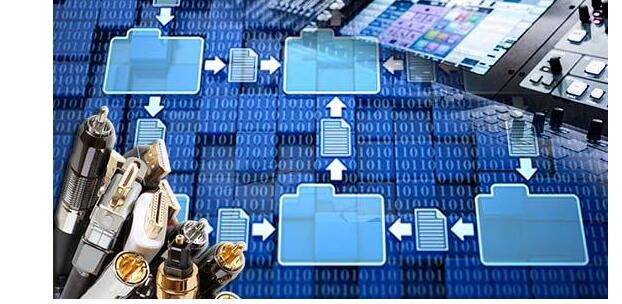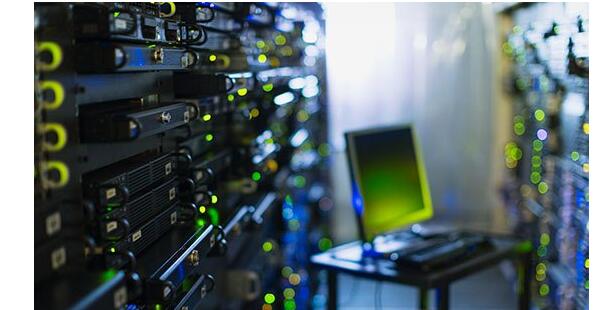A FPGA (Field Programmable Gate Array) is a chip that integrates a large number of basic gates and memories, and can define specific functions by burning into the FPGA configuration file to define the connection between these gates and memories. . And the burned-in content is configurable. By configuring specific files, the FPGA can be turned into a different processor, just like a reproducible whiteboard. Therefore, FPGA can flexibly support various types of deep learning calculation tasks. According to Baidu's research, performance shows that for a large number of matrix operations GPU is much better than FPGA, but when dealing with small calculations and large batches of actual calculations, FPGA performance is better The GPU, in addition to the low latency of the FPGA, is ideally suited to supporting massive amounts of real-time computational requests (such as speech cloud recognition) in the inferring stage.
FPGA advantageFast Time to Market: Complete, ready-to-use, standard IP suites reduce time-to-market, allowing you to take the lead in solving the latest market trends.
High performance: The use of the latest silicon process nodes combined with industry breakthroughs in transceivers, memory, core processing technologies and design tools.
Flexibility: A high degree of flexibility accommodates rapid design changes, enabling you to respond quickly to dynamic market trends, continuously developing standards and rapidly evolving infrastructure.
Customizable solutions: Customizable solutions allow you to differentiate products using your own proprietary IP.
Scale and specification: Scalable cores, I/O performance, memory and power requirements, and standardization across product lines and product lines and adjacent applications on a single platform reduce planning and outdated risks.
Long Product Life Cycle: During very long system deployments, security, quality, and reliability will become the system design requirements.

Both FPGAs and GPUs have a large number of computing units, so their computing power is very strong. When performing neural network operations, both are much faster than the CPU. However, because the architecture of the GPU is fixed, the hardware-supported instructions are fixed, and the FPGA is programmable. Its programmability is key because it allows software and terminal application companies to offer different solutions than their competitors, and has the flexibility to modify circuits for the algorithms they use.
In terms of average performance, GPUs are inferior to FPGAs. FPGAs can be used to program hardware according to specific applications. For example, if an application has a large number of addition operations, a large amount of logic resources can be used to implement adders. Once the GPU is designed, it cannot be changed. , so you can't adjust hardware resources based on your application.
At present, most machine learning uses the SIMD architecture, which means that only one instruction can process large amounts of data in parallel. Therefore, it is appropriate to use a GPU. However, some applications are MISD. That is, single data needs to be processed in parallel with many instructions. In this case, using FPGA as an MISD architecture will have advantages over GPU. Therefore, for the average performance, it is to see whether the advantages of the FPGA accelerator architecture can compensate for the disadvantages of the operating speed. If the architecture optimization on the FPGA can bring two to three orders of magnitude advantage compared to the GPU architecture, then the FPGA will be better than the GPU in average performance.
In terms of energy efficiency, due to the flexibility of the FPGA, when the architecture is optimized, the average performance of an FPGA can be similar to that of a GPU. Therefore, the total power consumption of the FPGA solution is much smaller than that of the GPU, and the heat dissipation problem can be greatly reduced. The comparison of energy efficiency ratios is also similar. Energy efficiency refers to the energy consumed to complete the program execution, and the energy consumption is equal to the power consumption multiplied by the execution time of the program. Although the power consumption of the GPU is much greater than that of the FPGA, if the FPGA takes several decades to execute the same program than the GPU, then the FPGA has no advantage in terms of energy efficiency; otherwise, if the hardware architecture implemented on the FPGA is optimized For a particular machine learning application, the time required to execute the algorithm is only a few times that of the GPU or even close to the GPU, so the FPGA's energy efficiency is better than that of the GPU.
In addition, the flexibility of the FPGA, many of the underlying hardware control operating techniques that are difficult to implement using general-purpose processors or ASICs can be easily implemented using FPGAs, leaving more room for algorithmic function implementation and optimization. At the same time, the one-time cost of the FPGA (photolithography mask production cost) is far lower than that of the ASIC. In the case that the chip demand has not yet reached the scale, and the deep learning algorithm is not yet stable and needs continuous iterative improvement, the FPGA chip with reconfigurable characteristics is used to achieve Semi-custom artificial intelligence chips are the best choice.

1. Application of FPGA in Data Acquisition
Since most signals in nature are analog signals, the general signal processing system must include the data acquisition function. A common implementation method is to use an A/D converter to convert an analog signal into a digital signal and then send it to a processor, such as an MCU or a digital signal processor (DSP) for operation and processing.
For low speed A/D and D/A converters, a standard SPI interface can be used to communicate with the MCU or DSP. However, high-speed A/D and D/A conversion chips, such as video decoders or encoders, cannot directly interface with general-purpose MCUs or DSPs. In this case, FPGA can complete the glue logic function of data acquisition.
2. Application of FPGA in Logic Interface Field
In actual product design, data communications with the PC are required in many cases. For example, the collected data is sent to the PC for processing, or the processed results are passed to the PC for display. The interface between the PC and the external system is relatively rich, such as ISA, PCI, PCI Express, PS/2, and USB.
Traditional design often requires a dedicated interface chip, such as a PCI interface chip. If more interfaces are needed, more peripheral chips are needed, and the size and power consumption are relatively large. With the FPGA solution, the interface logic can be implemented inside the FPGA, greatly simplifying the design of the peripheral circuit.
In modern electronic product design, memory has been widely used, such as SDRAM, SRAM, Flash and so on. Each of these memories has its own characteristics and uses. Reasonable choice of memory type can achieve the best price/performance ratio of the product. Because the functions of the FPGA can be completely designed, it is possible to implement controllers for various memory interfaces.
3. Application of FPGA in Level Interface Field
In addition to TTL and COMS interface levels, new level standards such as LVDS, HSTL, GTL/GTL+, and SSTL are gradually being adopted by many electronic products. For example, the LCD driver interface is generally an LVDS interface, the digital I/O is generally an LVTTL level, and the DDRSDRAM level is generally an HSTL.
In such a mixed-level environment, if the interface is implemented with a conventional level-shifting device, the circuit complexity will increase. Using FPGAs to support multi-level coexistence features can greatly simplify design and reduce design risk.
Second, high-performance digital signal processingWireless communications, software radios, high-definition video editing and processing, etc., place very high demands on the amount of computation required for signal processing. Traditional solutions generally use multiple DSPs in parallel to form a multiprocessor system to meet the needs.
However, the main problem brought by multi-processor systems is that the design complexity and system power consumption are greatly increased, and the system stability is affected. FPGAs support parallel computing, and their density and performance are constantly improving, and traditional multi-DSP solutions can already be replaced in many areas.
For example, an HD video encoding algorithm H.264 is implemented. Using TI's 1GHz clocked DSP chip requires four chips, and the use of Altera's StratixIIEP2S130 chip requires only one to complete the same task. The implementation flow of the FPGA is similar to the front-end design of the ASIC chip, which is conducive to the introduction of the back-end design of the chip.
Third, other application areasIn addition to the above application areas, FPGAs also have a wide range of applications in other fields. (1) Automotive electronics, such as gateway controllers/car PCs, and telematics systems. (2) Military areas such as security communications, radar and sonar, and electronic warfare. (3) Test and measurement areas such as communications testing and monitoring, semiconductor automated test equipment, and general-purpose meters. (4) Consumer products, such as monitors, projectors, digital TVs, set-top boxes, and home networks. (5) Medical fields such as software radio, electrotherapy, and life sciences.

With the development of science and technology, the manufacturing industry is moving towards a higher degree of automation and intelligence, and new demands are constantly generated in fields such as industrial control technology. In the future of industrial manufacturing, FPGAs will have more room for development. At present, there are two areas of great application prospects:
Industrial Internet
As the direction of future manufacturing development, industrial big data, cloud computing platforms, and MES systems are important platforms supporting industrial intelligence. They need to complete the complex processing of large amounts of data, and FPGAs can play an important role in them.
Industrial robot equipment field
In the multi-axial operation of precision control, real-time synchronous connection and multi-functional integration of equipment, etc., both flexible and integrated FPGA, more able to show design advantages. For example, automotive ADAS needs timely analysis, recognition and processing of real-time high-definition images. In terms of artificial intelligence, deep learning neural networks also require a large number of parallel operations.
Sff-8643,Hd Mini Sas Sff-8643 36P,High Speed And High Frequency Cable,Multi Server Connector
Dongguan Aiqun Industrial Co.,Ltd , https://www.gdoikwan.com